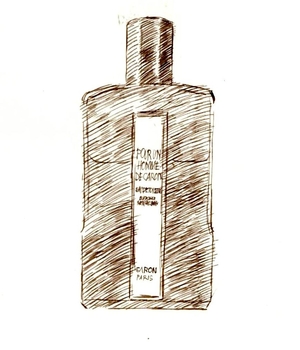Tagged With ‘Richard Freysse’
Caron
Pour un Homme
12 June, 2015
 I’ve known about Caron’s Pour un Homme for many years – it’s often been hailed as one of the classics of men’s perfumery, and a couple of friends used to enthuse about it – but on the odd occasions when I’d tried it I couldn’t really see what there was to get so excited about. Despite its heritage it came in a cheap-looking bottle, and the testers I smelled did nothing much for me; to be honest I thought it was a bit dull.
I’ve known about Caron’s Pour un Homme for many years – it’s often been hailed as one of the classics of men’s perfumery, and a couple of friends used to enthuse about it – but on the odd occasions when I’d tried it I couldn’t really see what there was to get so excited about. Despite its heritage it came in a cheap-looking bottle, and the testers I smelled did nothing much for me; to be honest I thought it was a bit dull.
But then I got a new bottle, and either Richard Fraysse, Caron’s in-house perfumer, has smartened up the fragrance formula, or the scales have fallen from my eyes. The new bottle is certainly tidier than the old ones were: even my enthusiastic friends admitted that it looked like members of the Caron family had stuck the labels on, rather wonkily, by hand.
Actually the Carons haven’t been involved with Parfums Caron since the early 1900s, when Anne-Marie Caron sold her family perfume shop in the Rue de la Paix in Paris to the brothers Ernest and Raoul Daltroff. The brothers came from a cosmopolitan Russian Jewish family – their father ran a railway company in Saône et Loire – but for some reason they decided to get into perfume.
There doesn’t seem to be any record of Ernest training in perfumery, but he evidently had a natural talent, and he was helped, from 1906, by a one-time dressmaker called Félicie Wanpouille, who became what we’d now call the company’s creative director. Between them they developed a series of perfumes, with striking packaging and beautiful Baccarat bottles, and in 1911 they had their first big success with Narcisse Noir (still available but completely reformulated and apparently nothing like the original).
In 1919 came Tabac Blond, which for many contemporaries captured the spirit of the so-called Jazz Age, and more particularly to the outrageous young women who had taken to smoking cigarettes in public (again it’s still on the shelves, but the modern version smells nothing like the original, which was more like the wonderful and still untampered-with Knize Ten). Daltroff made Félicie Wanpouille co-owner of Caron in 1922.
Pour un Homme arrived in 1934, and has since established itself as one of the all-time fragrance classics. On the face of it it’s a simple enough smell: lavender, lavender and more lavender. But perfumes (at least good ones) are rarely as simple as they might seem, and Pour un Homme is no exception.
Like Guerlain’s ground-breaking Jicky from 1889, it mixes lavender with vanilla, but with very different results: sniffing them side by side is a good reminder of why a list of ingredients tells you very little about what a perfume will actually smell like. Jicky has a strange, sexy but disconcerting smell, which has sometimes been compared with cat wee, and it’s the (mostly synthetic) vanilla that you notice first.
Pour un Homme, by contrast, smells very like real lavender when you brush its leaves, and (to me at least) it’s got an almost minty cool freshness. It’s a while before you smell the vanilla – and actually if I didn’t know it was in there I’m not sure I’d have even noticed. Though the lavender smell stays for a long time, this extra touch of vanilla (plus some nice but unobtrusive musks) adds a gently comforting character, without being sweet or cloying in any way.
All in all I think Pour un Homme is a lovely fragrance, if not one that’s likely to get you noticed at a party; this is something I’d wear for myself rather than for other people.
As for its brilliant creator, Ernest Daltroff, he came to a rather sad end. Though he escaped the Nazi invasion of France in 1939, moving first to Canada and then New York, he was by this time in his seventies, frail and depressed, and he died just three years later.
Félicie Wanpouille continued running Caron until she retired in 1962, when she sold the company to Parfums Revillon. In 1967 the brand was bought by the American pharmaceuticals company AH Robins, which opened a flagship store on the Avenue Montaigne. In 1988 Caron was sold again, this time to a French hair-products and cosmetics group, whose owner, Patrick Alès, had long admired the brand. Today it’s run by Patrick’s son Romain. Long may it prosper.